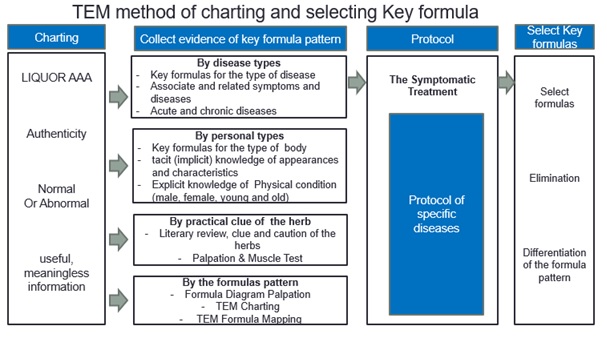
EM(Traditional Eastern Medicine) formulas are from Shang Han Lun and Jinkui Yaolue
By Hyunchang Cho, L.Ac., Ph.D
Introduction: TEM’s General Theories
TEM is an abbreviation for Traditional Eastern Medicine; it stands for TEM herbal formula research. Euyjoonn Roh, Ph.D., is a founder of TEM in Korea. Dr. Roh TEM research USA is the laboratory where we study and research the herbal medicine theory of Euyjoon Roh.
Traditionally, Asian medicine has treated many patients with herbal medicine and acupuncture. In this column, I would like to introduce the theory of Dr. Euyjun Roh, who is the most well-treated with herbal medicines in Korea.
TEM formula is mainly divided into general and classic formulas. Classic Formulas are the combination of Shang Han Lun and Jinkui Yaolue written by Zhang Zhongjing around AD 3C.
General formulas are the formulas that are written after Shang Han Lun.
I will introduce how to select the key formula that treats the patient well.
- About Medical Plan (Clinical Approach)
A medical plan should be a ‘truthful confession’ of your clinical practice and also a ‘tentative conclusion’ about the inductive facts experienced as a clinician. Therefore, the attitude of suggesting a medical plan should be persuasive, as if suggesting a useful guideline, rather than be decisive, as if declaring a universal truth.
The essence of the natural world (clinical reality) may be irregular, indeterminate, and complex. Nevertheless, I think it is the role of the medical theory to inspect the natural phenomena and reconstruct certain rules, certainty, and simplicity from them.
All scientific theories evolve as they are selected, discarded, re-selected, and discarded again through the process of trial and error, according to the passage of time. So likewise, my medical theories are also only a temporary conclusion to this day, and I believe that they will evolve with time as they go through the verification process.
I wanted to create a good clinical approach that meets the following five criteria.
The requirements of a good clinical approach
|
1. It’s simple and easy enough for anyone to understand. |
Simplicity |
|
2. It produced the same therapeutic results as I was taught. |
Reproducibility |
|
3. Without this approach, selecting the right formula would have been difficult. |
Usefulness |
|
4. It is consistent with the actual phenomena observed from clinical practice. |
Veracity |
|
5. The cure rates are excellent and so are the treatment effects. |
Efficacy |
- Charting Disease, Person, Herb, and Formula
Charting approach of Disease, Person, Herb, and formula is the name of my clinical approach.
Disease, Person, Herb, and Formula are the four pathways to approach the Key Formula.

(1) Disease(1st Pathway): approaching the Key Formula by disease types
– Protocols for certain disorders
In the first approach to the Key Formula, we take the approach by disease types. So, for example, my protocols for certain disorders are standardized clinical guidelines/manuals to treat certain(=various) disorders. Example) Protocol for Psychological Disorders, Protocol for Musculoskeletal Disorders
Protocols for certain disorders are clinical approaches that offer simple and easy access to TEM formulas and high cure rates in treating illnesses. The goal of protocols for certain disorders is to establish manuals that would guarantee simple and easy access to TEM formulas and more than 70% cure rate for certain(=various) disorders.
For the last ten years, I have established various protocols for treating illnesses we approach in our clinical practice. Some of these protocols are included in my books <Yakseo: Clinical Signs of Guiding Herbs> and <The Manual of Formulas from Shang Han Lun and Jin Kui Yao Lue>. In my upcoming 3rd book, I will introduce the remaining protocols as well.
(2) Body Type(2nd Pathway): approaching the Key Formula by personal types
Tacit Knowledge of CAPE and Explicit Knowledge of TIOM
In the second approach to the Key Formula, we take the approach by personal types. Personal types consist of Tacit Knowledge of CAPE and Explicit Knowledge of TIOM.
































